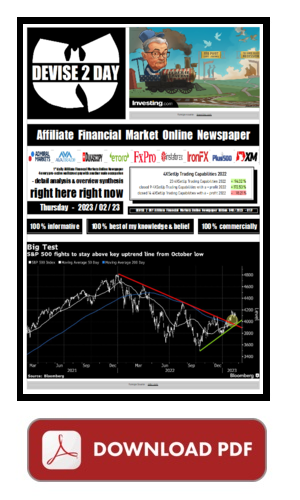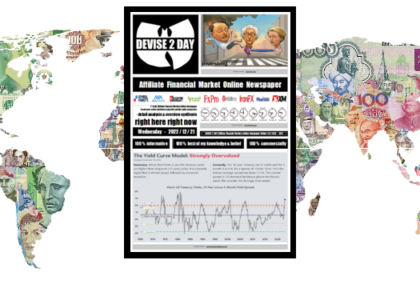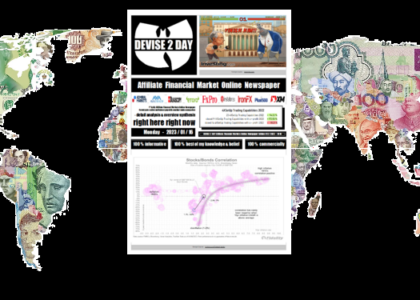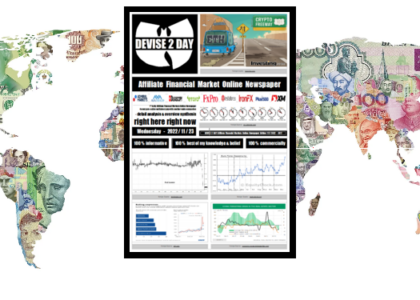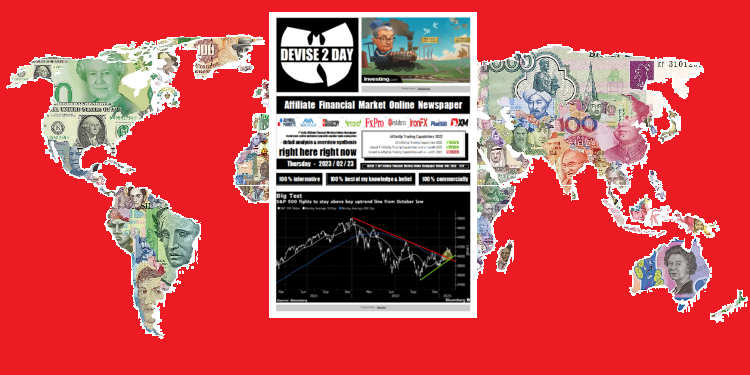
2023/02/23 (177.040) Technical Analysis – … & UKOIL
New Short 4XSetUp Trading Capability In UKOIL,
Because Inflation Will Stay Longer As We Want! Don`t You Think So Also?
The price of oil continued unabated on Wednesday
– even the Fed minutes could not help the black gold on its feet
The oil price continued its slide on Wednesday after heavy losses from the previous day. Many traders are currently awaiting further guidance on US interest rates and the Fed’s monetary policy stance, while many are also questioning the prospects for a potential demand recovery this year. Minutes from the February Fed meeting, to be released later today, are expected to reinforce the hawkish rhetoric as US inflation remained stubbornly high in January. Data from the Personal Consumption Spending Index, the Fed’s preferred indicator of inflation, should also show that inflation remained elevated in January. This in turn could prompt the US Federal Reserve to raise interest rates further. ICE-traded Brent crude was down 0.9% to $82.23 a barrel, while NYMEX-traded West Texas Intermediate WTI crude was down a whopping 1.1 % is trading at $75.46 a barrel. Both contracts had already lost more than 1% yesterday. Stronger-than-expected US economic data for February also did little to slow the sell-off in oil. The strong US economy gives the US Federal Reserve more leeway for further rate hikes. Rising interest rates are expected to slow economic growth this year and severely limit oil demand, particularly in the US, Europe and other developed countries.
The dollar, on the other hand, was firmer and is trading near a 6-week high against other select currencies. The strength of the dollar tends to affect oil prices as well. Markets also appeared to be reducing their bets on a full-scale demand recovery in China. Ed Morse, global head of commodities research at Citigroup (NYSE:C), warned on Tuesday that oil demand in China is unlikely to extend beyond 2021 levels and that the forecast demand recovery in the country is being “overestimated”. Although Chinese oil consumption has been recovering since lockdown measures were eased, overall demand is still below pre-pandemic highs. Demand for travel also appears to have stabilized after peaking at the end of January. “After this rebound, it’s the final swan song for demand in China and almost the final swan song for demand around the world,” Morse said in an interview with Bloomberg. His comments largely contradicted recent forecasts by OPEC and the International Energy Agency that a recovery in demand in China will push oil demand to record highs this year.Oil prices rose this Thursday, reversing much of the previous day’s losses.
Most recently, a barrel (159 liters) of North Sea Brent for delivery in April cost 81.65 US dollars. That was $1.05 more than the day before. The price of a barrel of American West Texas Intermediate (WTI) grade rose by 98 cents to $74.88. Market observers spoke of a countermovement. Oil prices have been weak in recent trading days. The main reason behind this is the expectation that larger central banks – above all the US Federal Reserve Bank – will continue their fight against high inflation for a while longer. The foreseeable higher interest rates are slowing down economic growth and thus also the demand for crude oil. The United States’ oil reserves rose again last week. Inventories of crude oil climbed 7.7 million barrels (159 liters) to 479.0 million barrels compared to the previous week, according to the Energy Department. Economists had only expected an increase of two million barrels. However, the private association American Petroleum Institute (API) had already reported on a strong increase in inventories on Wednesday. The price fluctuations according to the data from the Energy Ministry were therefore limited.
Goldman Sachs chief strategist warns of low oil capacity – oil price is likely to rise to 100 US dollars
With the beginning of the war in Ukraine, the price of oil rose sharply. Since then, the strong recovery has weakened somewhat. However, Jeff Currie from the major US bank Goldman Sachs expects the price of black gold to increase significantly again soon.
Corona crisis sent oil prices down – Ukraine war is driving
Oil prices had experienced a turbulent development in recent years. At the beginning of the Corona crisis in 2020, the price of black gold collapsed so much due to a sudden shortage of demand that it was even negative. Since then, the price has recovered. Especially at the beginning of the war in Ukraine in February 2022, the price of oil shot up. With sanctions against Russia, the market feared a severe shortage of oil stocks, which gave further impetus to the price of the commodity. On March 8, 2022, the price of a barrel of WTI variety jumped to an annual high of 123.70 US dollars, while a barrel of North Sea Brent variety cost 127.98 US dollars. In the meantime, the strong upward momentum has calmed down again somewhat, a barrel is currently available for USD 76.43 (WTI) or USD 83.15 (Brent) (as of February 19, 2023).
Goldman Sachs expects boost for oil prices
But now the price of oil could break out again, as Jeff Curie, chief strategist at the major US bank Goldman Sachs, predicted to the news agency “Bloomberg” in early February. At an event in Saudi Arabia, the analyst expressed concern that further sanctions against Russia would result in lower oil exports. In addition, the expert expects demand for oil from China to recover after the People’s Republic gradually lifts its COVID restrictions. “Right now we still have a balanced surplus because China hasn’t fully recovered yet,” Currie told the agency. However, this could change in the course of the year if the demand for oil exceeds the supply. The market expert initially considered it likely that the deficit would occur by May.Oil price could hit $100 mark
According to Currie, the supply deficit will then ensure that a large part of the oil producers’ previously unused capacities are exhausted, which should drive up the price of the liquid commodity. The financial house expected the price of oil to exceed the 100 US dollar mark again.
The supply of oil should therefore remain scarce in the months to come, Currie continued. The investments in expanding the production sites are too low to cover the demand. “Will we no longer have any free production capacity? We may have a serious problem from 2024,” says the Goldman strategist.
Parallels to record prices from 2007 and 2008
As Currie pointed out a few days earlier at a presentation in London, the commodities market is currently in a situation similar to that between 2007 and 2008. “Anyone remember what happened to oil prices between January 2007 and July 2008?” the chief analyst, according to Bloomberg. “The Fed is taking its foot off the brakes, China is accelerating, Europe is starting to grow rapidly,” Currie recalled. The only difference to the record increase in raw material prices almost 15 years ago is the availability of European natural gas. According to Currie, there should be enough stocks here for 2023. For almost all other critical raw materials, however, inventories are at critical levels, according to the expert.
Oil price forecast has now been adjusted
However, just a few days after the conference in Saudi Arabia, the major bank downgraded its outlook slightly, according to a Bloomberg report. Goldman Sachs now assumes that the price of Brent oil will not rise above 100 US dollars in the middle of the year, but will only reach the round mark at the turn of the year. Until then, the barrel price for the North Sea variety could then average around USD 92 instead of USD 98, which was previously estimated. “This adjustment reflects a slight weakening of our 2023 balance sheet,” Currie and his colleague Callum Bruce said in a statement obtained by the agency. For the rest of the year, the experts are assuming a supply surplus of 150,000 barrels per day. Not only is demand likely to be somewhat lower, but Russia and the USA are now likely to be producing larger quantities than previously assumed. On average, the oil price will then be around 100 US dollars in 2024.
Brent has trended sideways since November
There are signs of a possible recovery as price bounced off the lower boundary of the trend channel
While oil prices have largely traded sideways since November 2022, there are signs of a potential trend reversal. Brent (OIL) has made a couple of consecutive higher lows, suggesting the boundaries of a trend channel. The price has recently approached the lower border, which suggests that the bulls may soon regain control and push the price higher. There are chances for the oil price to move towards the resistance zone in the $89.00 area, which has acted as a ceiling lately. Potential targets are $89.00 and $93.50. Support is at the local low (around $78.50).Brent Crude Rises Above $82 Today While Gold Holds Decline After FOMC Minutes
Brent crude futures bounced back above $82 per barrel on Thursday, looking set to snap two days of losses amid lingering concerns about tight global supplies. Russia has announced its plans to cut oil exports from its western ports by up to 25% in March, exceeding its announced output curbs of 500,000 barrels per day. On top of that, market participants expect China’s oil imports to hit a record high in 2023 amid rising demand for transportation fuel and as new refineries come online. Still, fears of a demand-sapping global recession should limit any significant upside move. The latest EIA report data also showed that US inventories rose by 7.648 million barrels to 850.6 million in the week ending February 17th, the highest level since September.
Gold held its recent decline to below $1,830 an ounce on Thursday, hovering near its weakest levels in eight weeks as minutes from the Federal Reserve’s last meeting showed that policymakers largely agreed to keep fighting inflation with more interest rate hikes. The minutes stated that inflation “remained well above” the Fed’s 2% target and the labor market “remained very tight, contributing to continuing upward pressure on wages and prices.” These updates came on the heels of stronger-than-expected inflation, jobs and retail sales data in the US that supported the case for further monetary tightening. Some Fed officials also indicated last week that they are open to a bigger 50 basis point rate hike at the central bank’s meeting in March. Investors now look ahead to the latest US GDP and weekly jobless claims data on Thursday.
good morning, good day, and/or good night
at whatever time, wherever you are !
right here right now :

